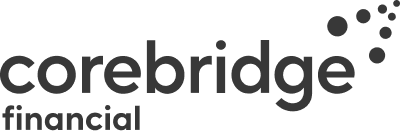When you’re shopping for life insurance, it’s important to pick a policy that can provide enough protection for your loved ones and fits within your budget. In most cases, term life insurance will be your cheapest option, but you’ll also need to find a life insurance company that offers you the most affordable rates for your specific profile.
We analyzed premium costs, policy options, customer satisfaction, and financial strength of the best insurers on the market to find the cheapest life insurance company for you. However, each insurer assesses risk differently, so the cheapest insurer for you will depend on your health and lifestyle profile. A Policygenius agent can help you find the most affordable life insurance coverage for your specific situation.
The cheapest life insurance companies of 2024
Company | Policygenius rating | Cheapest for | AM Best rating | |
4.9/5 ★ | People with pre-existing conditions | A+ | ||
4.8/5 ★ | Overall, people on a budget, seniors | A+ | ||
4.8/5 ★ | People considered overweight | A | ||
4.6/5 ★ | Families | A | ||
4.3/5 ★ | Smokers | A |
Read our full life insurance carrier reviews
Overall cheapest life insurance: Protective
Our top overall pick for cheapest life insurance is Protective. The company will likely be able to offer you rates cheaper than other insurers regardless of your health profile.
Cheapest life insurance for people on a budget: Protective
According to our analysis, Protective has some of the cheapest rates for common mental health conditions like depression, as well as kidney disease and some types of cancer, including prostate cancer. It offers long terms — up to 40 years — and coverage amounts as low as $100,000. Protective is one of the best choices for individuals who are cost-conscious.
Cheapest life insurance for seniors: Protective
We also found that Protective’s pricing makes it a top contender for seniors looking for relatively cheap term life insurance. It can offer cheaper rates than some of its competitors.
The company also has flexible financial guidelines regarding unearned income such as pensions, Social Security, and investment income. However, Protective does require a minimum household income of $25,000.
Cheapest life insurance for people with pre-existing conditions: The Banner Life family of companies
We think that the Banner Life family of companies (which also does business as Banner Life and William Penn) offers some of the cheapest rates, even for people with certain health conditions, including diabetes, asthma, and high blood pressure. The Banner Life family of companies also offers an affordable no-medical exam life insurance option for people eligible to skip the medical exam required by most insurers.
Cheapest life insurance for families: Corebridge Financial
Our analysis found that Corebridge Financial (formerly AIG Life & Retirement) offers cheaper rates and a quicker turnaround time than some of its competitors. If you have some common health conditions, such as anxiety and sleep apnea, you’ll likely get the cheapest rates with Corebridge. It also offers an affordable child rider, which is a policy supplement that can help families get coverage for their children.
Cheapest life insurance for smokers: Corebridge Financial
Corebridge Financial is our top pick for affordable life insurance for smokers. Not only did we find that Corebridge is a highly-rated company that offers affordable term life insurance with customizable term lengths and riders, but it also offers some of the cheapest rates on the market for both male and female smokers.
Cheapest life insurance for young people: Transamerica
According to our analysis, Transamerica offers affordable rates for young adults, students, and non-U.S. citizens, including visa holders and even applicants who don’t have a Social Security number (SSN). It also offers an affordable no-exam option that allows you to skip the medical test and simply fill out an online health questionnaire during your life insurance application.
Cheapest life insurance for people considered overweight: Pacific Life
We found that Pacific Life offers some of the cheapest rates to people who might be considered overweight based on their BMI, and people who have been treated for sleep apnea. The company has term life policies available with coverage amounts as low as $50,000 and terms as short as 10 years.
What is the cheapest type of life insurance?
Term life insurance is usually the cheapest way to provide financial protection for your family in the event of your death. It’s easy to manage, doesn’t have any complex tax implications or restrictions, and lasts for a set term — usually between 10 and 30 years — during the period of your life when you have the biggest expenses, such as mortgage payments, or the cost of raising a family.
Term life is typically significantly cheaper than permanent life insurance options like whole life insurance policy. Whole life is more expensive because it comes with added features like lifelong coverage and a cash value account.
Learn more about the main differences between term and whole life insurance
How much is life insurance?
Life insurance costs on average $30 per month for a $500,000 20-year, term life insurance policy for a 30-year–old male with few health conditions, and $23 per month for a 30-year-old female with a similar profile.
The younger and healthier you are, the cheaper the cost of life insurance will be for you, but every insurer evaluates the different factors that ultimately determine your premiums differently. That’s why it’s important to shop around with multiple life insurance companies, until you find the one that offers you the best rate for your unique profile.
Cheapest term life insurance rates
If you have limited health issues, you might be considered in excellent or very good health. The following rates are for a 20-year term life insurance policy with a $500,000 death benefit payout for those who qualify for the best rates.
Age | Gender | Preferred Plus health class | Preferred health class |
20 | Female | $18.54 | $22.65 |
Male | $23.66 | $30.20 | |
30 | Female | $18.90 | $22.99 |
Male | $22.59 | $29.32 | |
40 | Female | $28.73 | $35.27 |
Male | $34.27 | $42.95 | |
50 | Female | $63.71 | $78.29 |
Male | $81.71 | $102.50 | |
60 | Female | $169.25 | $194.16 |
Male | $234.59 | $268.04 |
Methodology: Rates are calculated for male and female non-smokers in a Preferred Plus and a Preferred health classification, obtaining a $500,000, 20-year term life insurance policy. Life insurance averages are based on a composite of policies offered by Policygenius from Corebridge Financial, Legal & General America, Pacific Life, Protective, and Transamerica, and the Policygenius Life Insurance Price Index, which uses real-time data from leading life insurance companies to determine pricing trends. Rates may vary by insurer, term, coverage amount, health class, and state. Not all policies are available in all states. Rate illustration valid as of 10/01/2024.
Cheapest life insurance rates for women
A 30-year-old non-smoking female with limited health issues can expect to pay $19 a month for a 20-year term life insurance policy with a $500,00 death benefit payout. Women pay on average 14% less for life insurance than men because their life expectancy is statistically longer.
Age | $250,000 coverage amount | $500,000 coverage amount | $1 million coverage amount |
20 | $12.77 | $18.54 | $25.94 |
30 | $12.76 | $18.90 | $28.19 |
40 | $17.88 | $28.73 | $47.40 |
50 | $36.14 | $63.71 | $111.43 |
60 | $94.91 | $169.25 | $303.02 |
Methodology: Average monthly rates are calculated for female non-smokers in a Preferred Plus health classification, obtaining a $250,000, $500,000, or $1,000,000 20-year term life insurance policy. Life insurance averages are based on a composite of policies offered by Policygenius from Corebridge Financial, Legal & General America, Pacific Life, Protective, and Transamerica, and the Policygenius Life Insurance Price Index, which uses real-time data from leading life insurance companies to determine pricing trends. Rates may vary by insurer, term coverage amount, health class, and state. Not all policies available in all states. Rate illustration valid as of 10/01/2024.
Learn more >> Life insurance for women
Cheapest life insurance rates for men
A 30-year-old non-smoking male with limited health issues can expect to pay $29 a month for a 20-year term life insurance policy with a $500,000 death benefit payout.
Age | $250,000 coverage amount | $500,000 coverage amount | $1 million coverage amount |
20 | $15.48 | $23.66 | $35.58 |
30 | $14.62 | $22.59 | $32.59 |
40 | $20.67 | $34.27 | $58.11 |
50 | $46.10 | $81.71 | $149.81 |
60 | $130.05 | $234.59 | $429 |
Methodology: Rates are calculated for male non-smokers in a Preferred Plus health classification, obtaining a $250,000, $500,000, or $1,000,000 20-year term life insurance policy. Life insurance averages are based on a composite of policies offered by Policygenius from Corebridge Financial, Legal & General America, Pacific Life, Protective, and Transamerica, and the Policygenius Life Insurance Price Index, which uses real-time data from leading life insurance companies to determine pricing trends. Rates may vary by insurer, term coverage amount, health class, and state. Not all policies available in all states. Rate illustration valid as of 10/01/2024.
Cheapest life insurance rates for seniors
Term life insurance will be the cheapest for seniors who have zero to one mild health condition (like mild osteoarthritis or elevated blood pressure), managed with medication or otherwise. Quotes are for term life insurance policies with a duration of 10 years.
Age | Gender | $250,000 coverage amount | $500,000 coverage amount | $1 million coverage amount |
55 | Female | $34.23 | $58.73 | $103.97 |
Male | $44.59 | $78.47 | $139.75 | |
60 | Female | $50.60 | $87.33 | $154.21 |
Male | $69.50 | $125.02 | $224.54 | |
65 | Female | $86.17 | $148.58 | $260.99 |
Male | $116.94 | $213.86 | $391.78 | |
70 | Female | $148.21 | $253.54 | $443.27 |
Male | $206.64 | $373.04 | $666.34 |
Methodology: Rates are calculated for male and female non-smokers in a Preferred Plus health classification, obtaining a $250,000, $500,000, or $1,000,000 10-year term life insurance policy. Life insurance averages are based on a composite of policies offered by Policygenius from Corebridge Financial, Legal & General America, Pacific Life, Protective, and Transamerica, and the Policygenius Life Insurance Price Index, which uses real-time data from leading life insurance companies to determine pricing trends. Rates may vary by insurer, term coverage amount, health class, and state. Not all policies available in all states. Rate illustration valid as of 10/01/2024.
Cheapest life insurance rates for smokers
Smokers pay at least twice as much for life insurance as non-smokers because the use of tobacco has known negative health effects, which affects insurance risk. However, the best life insurance companies for smokers offer affordable options depending on your overall health and other factors. The estimates below are for smokers with limited health issues.
Age | Gender | $250,000 coverage amount | $500,000 coverage amount | $1 million coverage amount |
20 | Female | $35.71 | $60.59 | $101.32 |
Male | $44.50 | $76.43 | $132.34 | |
30 | Female | $38.52 | $65.75 | $117.20 |
Male | $46.90 | $80.95 | $143.89 | |
40 | Female | $62.74 | $113.40 | $207.38 |
Male | $78.26 | $145.39 | $266.49 | |
50 | Female | $137.94 | $257.05 | $465.89 |
Male | $188.09 | $351.50 | $660.83 | |
60 | Female | $320.17 | $617.51 | $1,123.64 |
Male | $461.29 | $887.93 | $1,642.70 |
Methodology: Rates are calculated for male and female smokers in a Preferred Tobacco health classification, obtaining a $250,000, $500,000, or $1,000,000 20-year term life insurance policy. Life insurance averages are based on a composite of policies offered by Policygenius from Corebridge Financial, Legal & General America, Pacific Life, and Transamerica, and the Policygenius Life Insurance Price Index, which uses real-time data from leading life insurance companies to determine pricing trends. Rates may vary by insurer, term coverage amount, health class, and state. Not all policies available in all states. Rate illustration valid as of 10/01/2024.
Which factors affect the cost of life insurance?
Your overall health will be one of the most important factors that will determine whether you can get a cheap life insurance rate, so one of the best things you can do to lower the cost of your policy is to maintain your health as much as is in your control.
When you apply for life insurance, insurers assign you a health classification based on how risky you are to insure — the healthier they think you are, the less risky to insure they’ll consider you and thus the lower your premiums will be.
In addition to your health, the cost of life insurance is influenced by other factors that determine your overall risk of dying while the policy is active. These factors include your age, gender, and lifestyle choices.
Age: The younger you are, the lower your premium payments will be. Life insurance rates typically go up 4.5% to 9% every year you age, since we all become riskier to insure as we grow older.
Gender: Women pay an average of 24% less for life insurance than men. Since women often live longer than men, covering women presents less risk to an insurance company.
Lifestyle: Insurance companies consider some hobbies — like skydiving or scuba diving past a certain depth — or unhealthy habits — like smoking — risky enough to increase the cost of your life insurance.
Make sure that when you’re applying for life insurance, you’re honest with your agent so that they can find the insurer that will give you the most favorable evaluation based on your unique health and lifestyle profile.
7 ways to get cheap life insurance
While you can’t control some factors that influence premiums, like gender or a health diagnosis, there are specific steps you can take to lower the cost of your life insurance policy.
When you go through a major life change, like getting married or divorced, having a child, or changing jobs, you should reevaluate your insurance needs and consider adding or dropping coverage as needed. That way, you can ensure that you have the right coverage for your loved ones in place at the right price.








